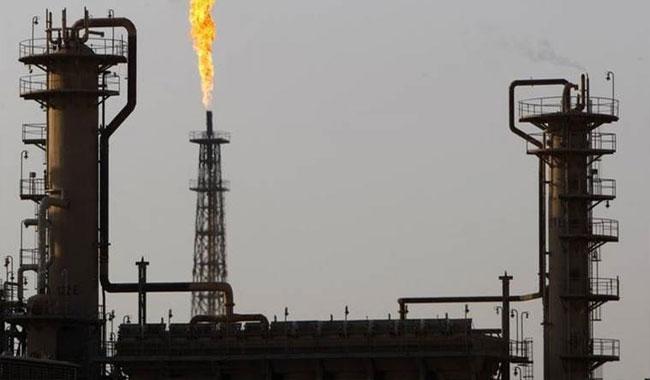Deep Conversion Refinery Project: High time to pave way for saving billions of dollars

By MG News | June 23, 2022 at 08:23 PM GMT+05:00
June 23, 2022 (MLN): This is the best time for local refineries to shift towards the production of environmentally compliant refined transportation fuels which will reduce the reliance on petroleum imports. This will eventually save billions of dollars for the country.
The execution of the 'Deep Conversion Project' by refineries will increase their capacity utilization after converting Furnace Oil (FO) into high-margin fuels like Petrol (MS) and High-Speed Diesel (HSD) which are currently being imported. This could be a win-win situation for refineries and the Government of Pakistan (GoP).
For refineries, the 'Deep Conversion Project' will enhance future earnings even if existing gross refining margins (GRMs) of a record $25 per barrel normalize to the historical average while the country will also save precious foreign exchange reserves of $0.4-0.5bn per annum, in the long run, a research report by Sherman Securities said.
Interestingly, based on GRMs, refineries can easily finance the up-gradation project without any additional support (duty protection etc) from the government under the new refinery policy during the construction phase.
The locally listed refineries (including NRL, PRL, CNERGY and ATRL) may cumulatively generate earnings of Rs180bn or U$0.9bn during FY23 (assuming combined production of 60mn barrels). While these earnings are adjusted for taxes, processing and other costs.
Based on industry sources, it is estimated that the 'Deep-Conversion' project roughly costs around $60-65 per bpd of refining capacity. Thus, the report suggests that listed refineries need to install a catalytic cracking unit of 40k bpd to convert FO into higher-margin products like HSD and MS which will cost around $1bn for the listed refining industry.
After the execution of the project, refineries can produce additional 25-30mn barrels of oil products per annum which according to the report, the country will save foreign exchange reserves of around $0.4bn in long run. However, considering the current margin of $30 per barrel on high-end products, short-term savings would be around $0.8bn.
Presently, out of a combined operational capacity of 240k bpd (excluding PARCO), listed refineries are operating at 70% (160k bpd) capacity despite record margins. This lower production is due to FO which is a dying product globally as well in Pakistan- constituting 22% of overall production.
Given a low demand in the power sector amid the government’s policy of relying on cheaper fuels, local refineries are forced to reduce the aggregate production of FOs, which in turn, affected the production of high distillates like MS and HSD, Farhan Mahmood at Sherman Securities said.
It is worth mentioning that in line with the global trend, the local refineries are earning $7-9 on a net basis, based on existing GRMs of $25 per barrel. This is due to the fact that refineries are earning better pricing of oil products versus crude oil due to capacity constraints in the global product market and the rising price of alternative transportation fuels including LNG and LPG in the wake of the Russia-Ukrainian war.
“However, we believe that this is an ideal opportunity for local refineries to initiate the project to protect future earnings once GRMs normalize in long term. Assuming GRMs reduce to a historic average of US$5-7 per barrel, refineries will still be earnings 30-35% better margins after adjusting for additional processing and depreciation cost post-plant up-gradation,” he concluded.
Related News
| Name | Price/Vol | %Chg/NChg |
|---|---|---|
| KSE100 | 131,949.07 198.95M |
0.97% 1262.41 |
| ALLSHR | 82,069.26 730.83M |
0.94% 764.01 |
| KSE30 | 40,387.76 80.88M |
1.11% 442.31 |
| KMI30 | 191,376.82 77.76M |
0.36% 678.77 |
| KMIALLSHR | 55,193.97 350.11M |
0.22% 119.82 |
| BKTi | 35,828.25 28.42M |
3.64% 1259.85 |
| OGTi | 28,446.34 6.84M |
-1.02% -293.01 |
| Symbol | Bid/Ask | High/Low |
|---|
| Name | Last | High/Low | Chg/%Chg |
|---|---|---|---|
| BITCOIN FUTURES | 108,125.00 | 110,525.00 107,865.00 |
-2290.00 -2.07% |
| BRENT CRUDE | 68.51 | 68.89 67.75 |
-0.29 -0.42% |
| RICHARDS BAY COAL MONTHLY | 97.50 | 0.00 0.00 |
0.75 0.78% |
| ROTTERDAM COAL MONTHLY | 106.00 | 106.00 105.85 |
-2.20 -2.03% |
| USD RBD PALM OLEIN | 998.50 | 998.50 998.50 |
0.00 0.00% |
| CRUDE OIL - WTI | 66.50 | 67.18 66.04 |
-0.50 -0.75% |
| SUGAR #11 WORLD | 16.37 | 16.40 15.44 |
0.79 5.07% |
Chart of the Day
Latest News
Top 5 things to watch in this week
Pakistan Stock Movers
| Name | Last | Chg/%Chg |
|---|
| Name | Last | Chg/%Chg |
|---|




 Central Government Debt
Central Government Debt
 CPI
CPI